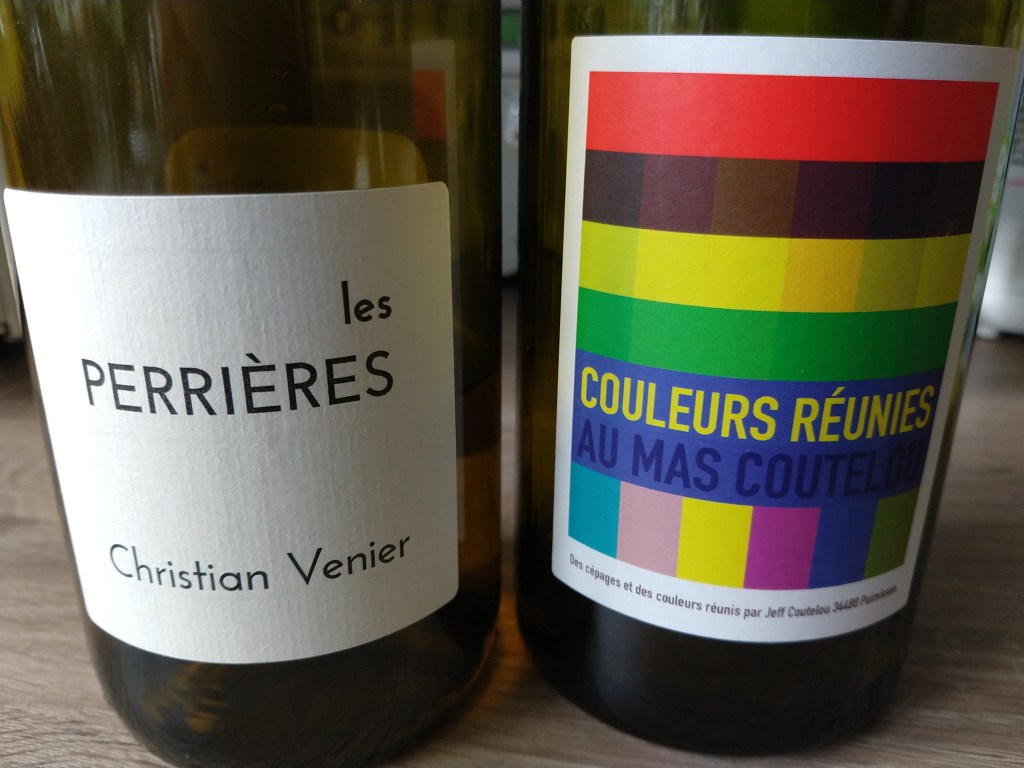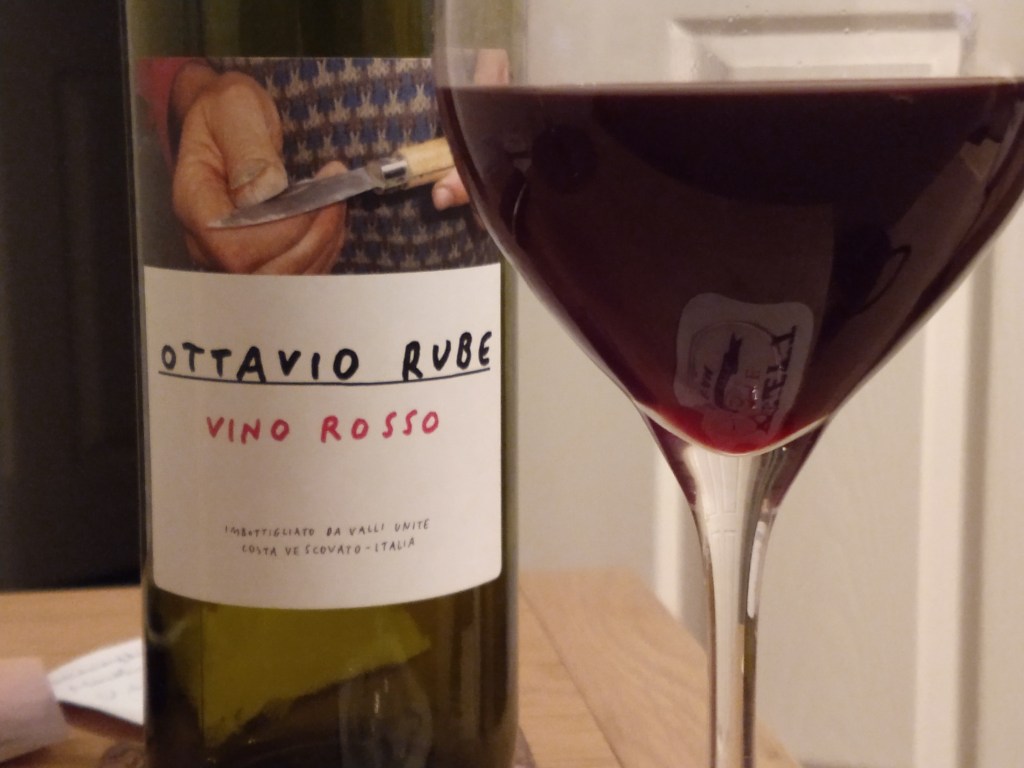Nothing to do with food I promise. That’s an avenue I never really venture into, drink whatever you like provided it doesn’t clash tends to be my motto. Reflecting on January wines consumed it occurred to me that the most interesting aspect came in pairs of bottles. After all, this of all years is not the time for Dry January.
Let’s start with Jeff Coutelou. I opened two bottles which I thought would form an interesting comparison. Both are Syrah, made in exactly the same way from the same vineyard. The principle difference is the vintage but that is also the point of the comparison. The two bottles are from vines on a north facing slope in La Garrigue. The soil is the ubiquitous argilo-calcaire, limestone with clay but this part of the vineyard has more complex geology with various types of soil as this, like Rome vineyard, was at the end of a moraine thousands of years ago and all kinds of rocks were left behind. The vines face north to protect from the direct Languedoc sunshine in afternoons, Syrah likes heat but not too much.
La Vigne Haute is the top wine made from the site, my own favourite wine too. This bottle was a 2013, the wine ages superbly with the vibrant fruit of youth settling and maturing into something gentler and much more complex. Natural wines don’t age without sulphur protection we used to be told, LVH is the perfect riposte to such nonsense. In some years Jeff feels that the fruit hasn’t been absolutely top quality. Perhaps the stream which runs well under the surface of the slope has been swollen by rain and the grapes become dilute. Or maybe a hot vintage stresses the vines, north facing or not. In those vintages Jeff makes a Syrah which is bottled under a different name so that LVH remains a guarantee of top quality. Nonetheless those bottles offer a really good wine, with fresh, fruity Syrah. In recent years Jeff has named this wine On Peut Pas Vraiment Dire Que. The bottle I opened was a 2017 and was pure pleasure.
Onto another pairing, Jeff and one of his best friends, Christian Venier. Christian’s vineyards and home are in the Loire in the Cheverny region. He and Jeff are firm friends with almost identical outlooks on how to tend their vines and make their wines. When Christian holds his annual weekend Portes Ouvertes event Jeff is always there, I have attended too and even hosted the Coutelou stand.
Les Couleurs Réunies 18 is a wine Jeff made for the first time in that vintage. The grapes come from over twenty varieties of vine, planted in Font D’Oulette which we commonly call Flower Power. The vines are still young and yields are tiny. Jeff fleshed them out with grapes such as Castets from Peilhan vineyard, blended in tank to ferment and mature and the result is LCR. The 2018 is on fine form just now, lovely fruit and complexity. To pair it up I chose one of Christian’s white wines, Les Perrières 2018.
How is that a pairing? Well, just as LCR contains grapes of the most obscure varieties (see this article) Les Perrières is made of one I hardly recognise, Menu Pineau. This variety is also known as Arbois and Orbois, by 2011 only a hundred hectares grown around the world, mostly in the Jura and the area around Vouvray in the Loire. My copy of Galet’s Dictionnaire tells me that it is used mostly for adding alcohol and softening the acidity of other grapes by means of blending. Christian’s wine is made purely of Menu Pineau. There is a density to the wine, exotic fruit aromas and the wine tastes dry but it’s aromatic and almost musky. Two vignerons embracing old grapes, old ways of working and producing wines of character and authenticity.
Finally, to a less successful pairing. Last year one of my favourite wines was the Simplement Gamay from La Paonnerie in the Loire. I bought more and disaster struck. The corkscrew met little resistance, the cork was very soft and I knew what the wine would be like. Sure enough a slight mustiness in the glass and fungal, coarse woody flavours. Bad enough but then I turned to a wine which is a regular, a simple red from the excellent Valle Unite in Piedmont, Ottavio Rube 2018 made from Dolcetto and Croatina grapes. The first glass was exactly what I hoped for, fresh acidity, bright red fruit. A second brought disappointment. Mousey flavours were present at the end of the mouthful. By the third glass the mousiness couldn’t be ignored, I simply can’t drink mousey wine.
I had a second bottle so I opened that the following evening to see whether that too would be spoiled. Same wine, same vintage. No mousiness. I can’t explain it, please feel free to offer suggestions. Mouse is a natural wine issue, it disappears with added SO2. I have experienced it too many times and in various circumstances. It is not as simple as bacterial infection, I have known wines which are mousey when tasted after the bottles have travelled but not mousey in the cellar of the producer. This was a fascinating, frustrating pairing but leaves more questions than answers.
If you can, try to find pairs of bottles, they do add another layer of interest to the whole wine experience.







